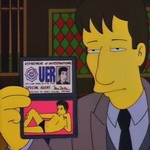 |
 |
|
UER Store
|
|
 order your copy of Access All Areas today!
order your copy of Access All Areas today!
|
 |
 |
|
Activity
|
|
475 online
Server Time:
2024-04-17 19:55:15
|
|
 |
 BeaverBanker
    
Location: Canunkastan
Gender: Male
Total Likes: 0 likes

A Hobo In A Orange Sweater
 | |  | |  | Re: UE & The Law (Maritimes, Prairies & Territories)
< Reply # 2 on 12/13/2009 10:04 PM >
| Reply with Quote
| | | You think its just a fine eh? Read Below, all i can say if you get caught you better hope they don't charge you under the Criminal Code of Canada.
Ether way I don't UE anymore because of the legal side of things.
If you need any clarification on the act just ask, I'll do my best to answer in a timely response.
IM NOT A LAWYER! SO IF YOU WANT TRUE LEGAL ADVICE CONTACT A LAWYER
I highlighted the important parts
This applies to all of Canada
Criminal Code
R.S.C. 1985, c. C-46
PART V
SEXUAL OFFENCES, PUBLIC MORALS AND DISORDERLY
CONDUCT
Disorderly Conduct
SECTION 177.
Trespassing at night
177. Every one who, without lawful excuse, the proof of which lies on him, loiters or prowls at night on the property of another person near a dwelling-house situated on that property is guilty of an offence punishable on summary conviction.
R.S.C. 1970, c. C-34, s. 173.
Criminal Code
R.S.C. 1985, c. C-46
PART IX
OFFENCES AGAINST RIGHTS OF PROPERTY
Interpretation
SECTION 321.
Definitions
321. In this Part,
"break"
"break" means
o (a) to break any part, internal or external, or
o (b) to open any thing that is used or intended to be used to close or to cover an internal or external opening;
Criminal Code
R.S.C. 1985, c. C-46
PART IX
OFFENCES AGAINST RIGHTS OF PROPERTY
Breaking and Entering
SECTION 348.
Breaking and entering with intent, committing offence or breaking out
348. (1) Every one who
o (a) breaks and enters a place with intent to commit an indictable offence therein,
o (b) breaks and enters a place and commits an indictable offence therein, or
o (c) breaks out of a place after
+ (i) committing an indictable offence therein, or
+ (ii) entering the place with intent to commit an indictable offence therein,
is guilty
o (d) if the offence is committed in relation to a dwelling-house, of an indictable offence and liable to imprisonment for life, and
o (e) if the offence is committed in relation to a place other than a dwelling-house, of an indictable offence and liable to imprisonment for a term not exceeding ten years or of an offence punishable on summary conviction.
Presumptions
(2) For the purposes of proceedings under this section, evidence that an accused
o (a) broke and entered a place or attempted to break and enter a place is, in the absence of evidence to the contrary, proof that he broke and entered the place or attempted to do so, as the case may be, with intent to commit an indictable offence therein; or
My Law book annotation on Presumption of intent
Presumption of intent [subsec. (2)] -- Once a prima facie case is made out using this presumption the accused need only raise a reasonable doubt, which he may do by adducing evidence of an explanation that may reasonably be true. However, an explanation that is disbelieved does not constitute "any evidence to the contrary" as it is no evidence. The evidence upon which the accused relies must at least raise a reasonable doubt as to his guilt, and if it does not meet this test then the prima facie case remains: R. v. Proudlock, [1979] 1 S.C.R. 525, 43 C.C.C. (2d) 321. [Note: Since this decision the Criminal Code has been amended to delete the word "any" from the phrase "in the absence of any evidence to the contrary". However, the majority judgment in R. v. Proudlock indicates that there is no basis for a distinction depending on the presence of the word "any"; the phrases "evidence to the contrary" and "any evidence to the contrary" both being the converse of "no evidence to the contrary".]
When there is any evidence to the contrary, in the sense of evidence tending to negative the existence of the necessary intent, the onus is then upon the Crown to prove the existence of the necessary intent beyond a reasonable doubt. Evidence of the accused's condition due to the consumption of alcohol and drugs which caused him to act in an irrational manner was evidence to the contrary in that it tended to negative an intent to commit an indictable offence: R. v. Campbell (1974), 17 C.C.C. (2d) 320 (Ont. C.A.).
Evidence that the accused is of good character is not of itself "evidence to the contrary": R. v. Khan (1982), 66 C.C.C. (2d) 32, 36 O.R. (2d) 399 (C.A.).
The presumption in this subsection is not available where the indictment specifies the particular indictable offence such as theft or mischief: R. v. Khan, supra.
o (b) broke out of a place is, in the absence of any evidence to the contrary, proof that he broke out after
+ (i) committing an indictable offence therein, or
+ (ii) entering with intent to commit an indictable offence therein.
Definition of "place"
(3) For the purposes of this section and section 351, "place" means
o (a) a dwelling-house;
o (b) a building or structure or any part thereof, other than a dwelling-house;
o (c) a railway vehicle, a vessel, an aircraft or a trailer; or
o (d) a pen or an enclosure in which fur-bearing animals are kept in captivity for breeding or commercial purposes.
PART IX
OFFENCES AGAINST RIGHTS OF PROPERTY
Breaking and Entering
SECTION 349.
Being unlawfully in dwelling-house
349. (1) Every person who, without lawful excuse, the proof of which lies on that person, enters or is in a dwelling-house with intent to commit an indictable offence in it is guilty of an indictable offence and liable to imprisonment for a term not exceeding ten years or of an offence punishable on summary conviction.
Presumption
(2) For the purposes of proceedings under this section, evidence that an accused, without lawful excuse, entered or was in a dwelling-house is, in the absence of any evidence to the contrary, proof that he entered or was in the dwelling-house with intent to commit an indictable offence therein.
PART IX
OFFENCES AGAINST RIGHTS OF PROPERTY
Breaking and Entering
SECTION 350.
Entrance
350. For the purposes of sections 348 and 349,
o (a) a person enters as soon as any part of his body or any part of an instrument that he uses is within any thing that is being entered; and
o (b) a person shall be deemed to have broken and entered if
+ (i) he obtained entrance by a threat or an artifice or by collusion with a person within, or
+ (ii) he entered without lawful justification or excuse, the proof of which lies on him, by a permanent or temporary opening.
PART IX
OFFENCES AGAINST RIGHTS OF PROPERTY
Breaking and Entering
SECTION 351.
Possession of break-in instrument
351. (1) Every one who, without lawful excuse, the proof of which lies on them, has in their possession any instrument suitable for the purpose of breaking into any place, motor vehicle, vault or safe under circumstances that give rise to a reasonable inference that the instrument has been used or is or was intended to be used for such a purpose,
o (a) is guilty of an indictable offence and liable to imprisonment for a term not exceeding ten years; or
o (b) is guilty of an offence punishable on summary conviction.
Disguise with intent
(2) Every one who, with intent to commit an indictable offence, has his face masked or coloured or is otherwise disguised is guilty of an indictable offence and liable to imprisonment for a term not exceeding ten years.
R.S.C. 1985, c. C-46
PART XI
WILFUL AND FORBIDDEN ACTS IN RESPECT OF CERTAIN
PROPERTY
Interpretation
SECTION 428.
Definition of "property"
428. In this Part, "property" means real or personal corporeal property.
PART XI
WILFUL AND FORBIDDEN ACTS IN RESPECT OF CERTAIN
PROPERTY
Mischief
SECTION 430.
Mischief
430. (1) Every one commits mischief who wilfully
o (a) destroys or damages property;
o (b) renders property dangerous, useless, inoperative or ineffective;
o (c) obstructs, interrupts or interferes with the lawful use, enjoyment or operation of property; or
o (d) obstructs, interrupts or interferes with any person in the lawful use, enjoyment or operation of property.
Mischief in relation to data
(1.1) Every one commits mischief who wilfully
o (a) destroys or alters data;
o (b) renders data meaningless, useless or ineffective;
o (c) obstructs, interrupts or interferes with the lawful use of data; or
o (d) obstructs, interrupts or interferes with any person in the lawful use of data or denies access to data to any person who is entitled to access thereto.
Punishment
(2) Every one who commits mischief that causes actual danger to life is guilty of an indictable offence and liable to imprisonment for life.
Punishment
(3) Every one who commits mischief in relation to property that is a testamentary instrument or the value of which exceeds five thousand dollars
o (a) is guilty of an indictable offence and liable to imprisonment for a term not exceeding ten years; or
o (b) is guilty of an offence punishable on summary conviction.
Idem
(4) Every one who commits mischief in relation to property, other than property described in subsection (3),
o (a) is guilty of an indictable offence and liable to imprisonment for a term not exceeding two years; or
o (b) is guilty of an offence punishable on summary conviction.
Mischief relating to religious property
(4.1) Every one who commits mischief in relation to property that is a building, structure or part thereof that is primarily used for religious worship, including a church, mosque, synagogue or temple, or an object associated with religious worship located in or on the grounds of such a building or structure, or a cemetery, if the commission of the mischief is motivated by bias, prejudice or hate based on religion, race, colour or national or ethnic origin,
o (a) is guilty of an indictable offence and liable to imprisonment for a term not exceeding ten years; or
o (b) is guilty of an offence punishable on summary conviction and liable to imprisonment for a term not exceeding eighteen months.
Mischief in relation to cultural property
(4.2) Every one who commits mischief in relation to cultural property as defined in Article 1 of the Convention for the Protection of Cultural Property in the Event of Armed Conflict, done at The Hague on May 14, 1954, as set out in the schedule to the Cultural Property Export and Import Act,
o (a) is guilty of an indictable offence and liable to imprisonment for a term not exceeding ten years; or
o (b) is guilty of an offence punishable on summary conviction.
Idem
(5) Every one who commits mischief in relation to data
o (a) is guilty of an indictable offence and liable to imprisonment for a term not exceeding ten years; or
o (b) is guilty of an offence punishable on summary conviction.
Offence
(5.1) Every one who wilfully does an act or wilfully omits to do an act that it is his duty to do, if that act or omission is likely to constitute mischief causing actual danger to life, or to constitute mischief in relation to property or data,
o (a) is guilty of an indictable offence and liable to imprisonment for a term not exceeding five years; or
o (b) is guilty of an offence punishable on summary conviction.
Saving
(6) No person commits mischief within the meaning of this section by reason only that
o (a) he stops work as a result of the failure of his employer and himself to agree on any matter relating to his employment;
o (b) he stops work as a result of the failure of his employer and a bargaining agent acting on his behalf to agree on any matter relating to his employment; or
o (c) he stops work as a result of his taking part in a combination of workmen or employees for their own reasonable protection as workmen or employees.
Idem
(7) No person commits mischief within the meaning of this section by reason only that he attends at or near or approaches a dwelling-house or place for the purpose only of obtaining or communicating information.
Definition of "data"
(8) In this section, "data" has the same meaning as in section 342.1.
[last edit 12/14/2009 7:41 AM by BeaverBanker - edited 5 times]
|
|
|
nootz
    
Location: Lake Echo, NS
Gender: Male
Total Likes: 17 likes

Many will always go where only one is needed
 | |  | |  | |  | Re: UE & The Law (Maritimes, Prairies & Territories)
< Reply # 8 on 12/15/2009 4:26 AM >
| Reply with Quote
| | | Posted by sonikgirl
I didn't read the whole thing, but it sounds like you can only be charged if you actually BROKE something in order to get in.. in most of these cases there's open doors, or broken open windows and most of us aren't the person who actually broke these open. In most cases we just enter places that already have access in order to not be charged - so we should be clear.
HOWEVER, is this saying that because we're found inside, it's assumed we were the person who actually broke open the door or window that we can be charged?
|
Basically, if there's a "No Trespassing" sign, we can be charged with trespassing AND B&E, even if we're not the ones who broke in. Also (speaking from experience): Even if there is NOT a "No Trespassing" sign, we can still be charged with trespassing and B&E, whether there was already an opening or not. It really just depends on if the cop on scene (if any) is a dick or not. For me, they basically just said "Don't let us catch you on here again. You're now banned from the property." Which doesn't really make sense in itself: Why would we be "banned" from a property in which we're not even supposed to be on in the first place?
|
Have faith only in those who you trust. And hold who you trust close to you for you have no idea when you will need them most.
http://nootz101.blogspot.com |
|
BeaverBanker
    
Location: Canunkastan
Gender: Male
Total Likes: 0 likes

A Hobo In A Orange Sweater
 | |  | |  | Re: UE & The Law (Maritimes, Prairies & Territories)
< Reply # 16 on 12/16/2009 2:24 AM >
| Reply with Quote
| | | Posted by sonikgirl
The law and what the police say/do can be two different things in my experience... I'm assuming BeaverBanker is a law student, so I'd like to know the actual LAW is.. it's good to know your rights.
You may have been banned, someone else may have been charged and someone else may have been told, oh you crazy kids.. get outta here.
|
I'm a environmental law student. But the written form of law can be interrupted differently,thus this is how lawyers make money. Remember that with a B&E you are tried in court and the journey is what defines you as guiltily. Also as someone said (noots?) the peace officer that is handling the situation has most of the discretion of how to charge/warn you. You do not want to ever be charged under the CCC. Because being charged under Section 177 (Trespassing At Night) is a very serious charge. A B&E is even worse. The key point with the B&E charge is being able to prove that you were not there to steal or conduct another indictable offense, and if you lack any evidence you can be charged.(That is my interpretation of it, BUT I'M NOT A LAWYER) As for the Manitoba law: "Exception where honest belief
1(4) Subsection (1) does not apply where a person entering or trespassing upon the lands or premises there described is acting under an honest and reasonable belief that he or she has the right to do the act complained of. " That translate to me in the case of a person trespassing on land for hunting/fishing. NOT someone in a old shopping mall..walking around in dark cloths with a flashlight
|
|
|
|

| This thread is currently Public. Anyone, including search engines, may see it. |
|
All content and images copyright © 2002-2024 UER.CA and respective creators. Graphical Design by Crossfire.
To contact webmaster, or click to email with problems or other questions about this site:
UER CONTACT
View Terms of Service |
View Privacy Policy |
Server colocation provided by Beanfield
This page was generated for you in 203 milliseconds. Since June 23, 2002, a total of 738351225 pages have been generated.
|
|

 order your copy of Access All Areas today!
order your copy of Access All Areas today!













